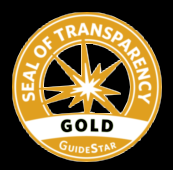Homeless Horses: An Update on Unwanted Horses in the United States
I recently had a couple of people forward a link to an article that appeared in The Horse magazine. The name of the article was “Homeless Horses: An Update on Unwanted Horses in the United States”. While I read with interest, I noted that a lot of the information is the same as what I have been writing about for years. The first paragraph of the article starts out by saying: “Unwanted horses are a challenging issue without easy answers. “The more you know about it, the more difficult the solution seems”, says Tom Lenz, DVM, Dipl. ACT, who’s been searching for answers to the problem for the past 20 years.”
As I see it, for the past 20 years, most of the energy from the masses of horse organizations, individuals, etc., it all seems to be about two things: Slaughter (or not to Slaughter) and Rescue. Don’t any of these people know by now that neither one of these things is going to fix the unwanted horse problem? I’m not that smart, but it is inconceivable that someone hasn’t come up with a Get-Well Plan (besides GERL).
One of the things that I learned from the article is the relationship between many of the larger, well-known organizations. For instance, did you know that in 2005, the American Horse Council and its allies- including breed registries and the AAEP (American Association of Equine Practitioners) – founded the Unwanted Horse Coalition (UHC)? The UHC is an organization that promotes castration through their Stallion to Gelding program, which was so impressive to me and the other GERL Board members, that we decided to adopt the name and application they used to create our own Stallion to Gelding program. They have provided GERL with a $1,000 grant for several of our Castration Day clinics over the years and I applaud their work.
Some other interesting information contained in the article was about how the situation has evolved in recent years. For example, in 2014 the European Union banned the import of horse meat from Mexico, meaning fewer U.S. horses shipped to Mexico for processing. As I have said for many years, the situation with slaughter would eventually take care of itself. Eight years ago, I saw a You-Tube video of Europeans throwing horse meat in the floor of the grocery store where they shopped, in protest of the “tainted horse meat” that was being imported for human consumption. I’m not sure of the reason they banned horse meat from Mexico, but Canada could be next. That would put approximately 130,000 unwanted horses into the mix. Unfortunately, many of the big equine charities are putting most of their efforts in promoting rescue and rehoming. I think there needs to be a real solution in place before that happens or I fear that we will see a huge spike in the number of abused and neglected horses.
Of course, you know I’m sitting here rather smug because I believe with every fiber of my being, that our Equine Get-Well Plan that we have been following for the past 8 years is the closest thing to an answer as I’ve seen out there, anywhere. Over the years, I have grown weary of the fact that none of the big animal advocate organizations choose to acknowledge GERL for the many programs we have created to become a more diversified non-profit. They have been furnished a copy of our Get-Well Plan more than once but have shown no interest.
However, after reading this article, let me say this about that…I am in this for the long-haul and I will prepare a letter, along with a copy of the Get-Well Plan, to Tom Lenz, DVM, Dipl. ACT! We’ll see what he has to say!
Patty Livingston
President
